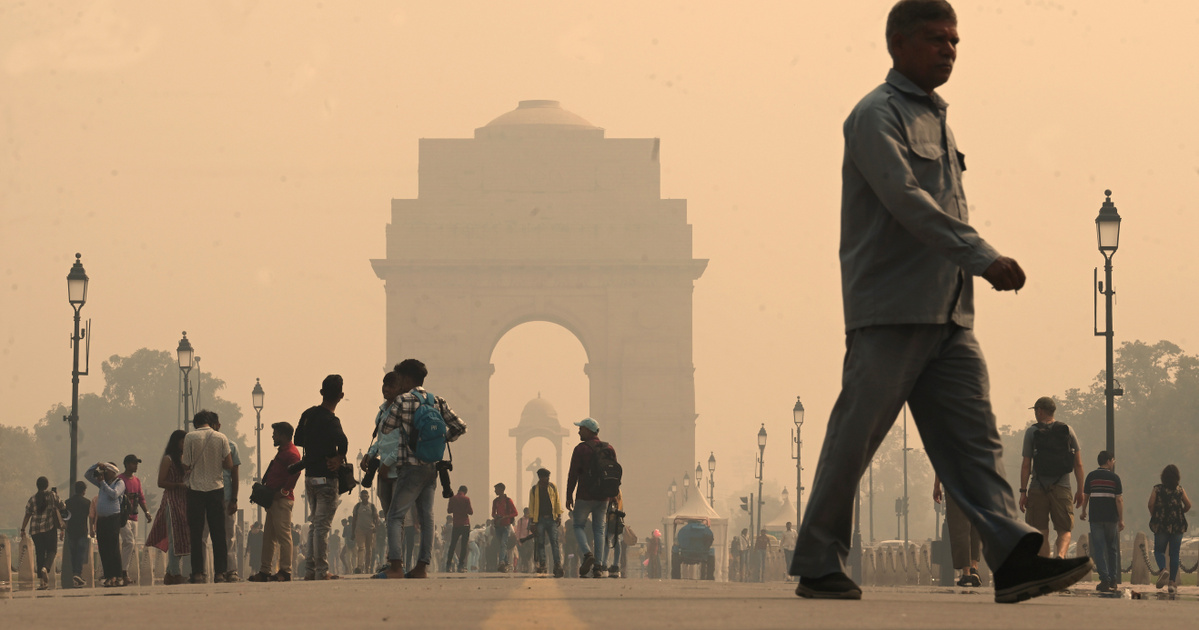Only seven countries adhere to the World Health Organization's international air quality standards, the guideline limit for PM2.5 (fine particles) emitted and introduced into the air by cars, trucks and industrial processes. Watchman Quoting a report issued by the Swiss air quality organization IQAir.
The sometimes deadly level of air pollution is exacerbated by booming economic activity and the toxic effects of smoke from forest fires.
In the report, the air quality in 134 countries and regions was examined, however, the vast majority of countries do not meet PM2.5 requirements.
PM2.5 consists of microscopic soot particles smaller than the thickness of a human hair, which when inhaled can cause countless health problems and deaths, threatening people with serious consequences, according to a report by the Swiss air quality organization IQAir, which uses data from more than 30,000 Measuring station around the world.
It kills seven million people every year
Although the world's air is generally much cleaner than it was for most of the last century, there are still places where pollution levels are particularly dangerous.
The most polluted country is Pakistan, where the PM2.5 level is more than 14 times higher than the World Health Organization standard, followed by India, Tajikistan and Burkina Faso in the classification of the most polluted regions.
But even in wealthy and rapidly developing countries, air quality and progress in reducing air pollution are at risk.
Canada, long considered to have the cleanest air in the Western world, last year ranked worst in terms of PM2.5 due to record-breaking wildfires in the country, which sent toxins into the United States as well.
In the case of China, improvement in air quality last year was hampered by the recovery in economic activity in the wake of the Covid-19 epidemic, and according to the report, PM2.5 levels rose by 6.5 percent in the world's second most populous country and the East. Asian country.
Only seven of the 134 regions studied – Australia, Estonia, Finland, Grenada, Iceland, Mauritius and New Zealand – comply with the WHO's maximum fine particulate matter guidelines.
“Unfortunately, things are going backwards,” said Glory Dolphin Hames, CEO of IQAir North America. “The science is quite clear about the effects of air pollution, yet we have become accustomed to believing that baseline pollution levels are too high to be healthy. We are not making adjustments fast enough.”
Air pollution kills an estimated 7 million people worldwide each year, more than the victims of AIDS and malaria combined.
This burden is most evident in developing countries, which are particularly dependent on dirty fuels for heating, lighting and cooking indoors.
The most polluted urban area in the world last year was Begusarai in India, according to IQAir's sixth annual report, which says India has the four most polluted cities in the world. However, most of the developing world, especially African countries, lack reliable air quality measurements.
The situation is not very bright in Hungary either
Air quality is a major factor in the development of respiratory diseases, with 300,000 people in Europe and 13,000 people in Hungary dying prematurely every year as a result of air pollution – former Head of State János Ader, Chairman of the Board of Trustees of Keck Poligo Climate Foundation spoke about this at the Budapest conference Pulmonology.
The German Environmental Aid Association (Deutsche Umwelthilfe, DUH) carried out measurements of air pollution in Budapest in cooperation with the Air Working Group, the results of which were published in March. In many cases, civilians measured values much higher than they had before. The measuring stations are shown.
Based on data from the Swiss air quality organization IQAir, the average PM2.5 concentration in Hungary in 2023 was 2.4 times greater than the WHO annual guideline value for air quality.
the According to organization data In 2023, the cleanest settlement in Hungary was the village of Szőkedencs, in Somogy County, in the Marcali District. Kazincbarcika in Borsod-Abaúj-Zemplén County won the award for the most polluted settlement.
The policy has been tightened, but it remains generous with respect to risks
The World Health Organization lowered its guidelines for “safe” PM2.5 levels to five micrograms per cubic meter in 2021, and by that measure lags behind many countries, such as Europe, that have significantly cleaned up their air over the past 20 years.
But even this stricter policy may not be able to fully capture the dangers of harmful air pollution.
According to research published by American scientists last month, there is no safe level of PM2.5 particles, and even the slightest exposure to them leads to an increase in hospitalizations due to heart disease and asthma.
According to Hammes, states should take steps to make their cities more walkable and less car-dependent, change forest management practices to reduce the impact of smoke from wildfires, and move faster to use clean energy sources instead of fossil fuels. “We share the skies with everyone else in the world, and we have to make sure we don't do things that harm people living elsewhere,” he said.
According to Aidan Farrow, senior air quality researcher at Greenpeace International, better monitoring of air quality is also needed. “In 2023, air pollution remains a global health catastrophe, and IQAir’s global dataset is an important reminder of the resulting injustices and that many steps need to be taken to address the problem,” Greenpeace’s lead international air quality researcher said.
(Cover photo: Vipin Kumar/Hindustan Times/Getty Images)














































